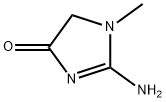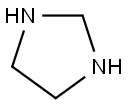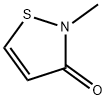Creatinine
Synonym(s):2-Amino-1-methyl-2-imidazolin-4-one;2-Imino-N-methylhydantoin;2-Imino-1-methylimidazolidin-4-one;Creatinine
- CAS NO.:60-27-5
- Empirical Formula: C4H7N3O
- Molecular Weight: 113.12
- MDL number: MFCD00059730
- EINECS: 200-466-7
- SAFETY DATA SHEET (SDS)
- Update Date: 2024-12-18 14:15:32

What is Creatinine?
Description
Creatinine is together with urea, the most widely known "uremic toxin", and is usually assessed when- ever a reduction in kidney function is suspected. This is mainly because creatinine evaluation is cheap, widely accessible and relatively well reflects the renal function. It also forms the basis for estimation of estimated glomerular filtration rate (eGFR) and thus is a major component of all principal eGFR equations.
Creatinine, which is nonenzymatically produced from the creatine pool in skeletal muscle, but is also to some extent generated from exogenous creatine present in meat, is the major guanidine compound retained in patients with diminished glomerular filtration rate. Creatinine is routinely determined in plasma or serum as a measure of impairment of renal function and it might be expected that a variety of uremic symptoms correlate with the plasma creatinine level; this does not, however, necessarily imply a causal relationship. In fact, high serum creatinine levels correlate with low mortality in HD patients, presumably because the creatinine generation rate reflects the size of the muscle mass. Creatinine seems to be relatively nontoxic. Large amounts of creatinine have been fed to healthy subjects without any adverse effects and animals also tolerate large doses.
Chemical properties
white powder
The Uses of Creatinine
Creatinine is the end product of creatine catabolism. Creatinine is a normal constituent of urine. Also found together with creatine in muscle tissues and blood. Creatinine is found in all soils and i n grain seeds and other vegetable matter as well as in certain fish and in crab meat extract.
The Uses of Creatinine
metabolic enhancer
The Uses of Creatinine
Creatinine levels in blood and urine may be used to calculate the creatinine clearance (CrCl), which reflects the glomerular filtration rate (GFR), an important clinical index of renal function. It is a substrate for creatininase.
What are the applications of Application
Creatinine, anhydrous is a substrate for creatininase
Definition
ChEBI: A lactam obtained by formal cyclocondensation of creatine. It is a metabolite of creatine.
Biological Functions
Creatinine is a byproduct of a chemical compound called creatine, which helps muscles get the energy that they need. As a waste product, creatinine is filtered out of the blood by the kidneys and removed from the body in urine.
A creatinine test measures the amount of this chemical in either the blood or urine. Creatinine levels can provide an indication of how well the kidneys are working.
Creatinine may be measured alone or included in a panel of tests that include other compounds found in the urine or blood.
https://labtestsonline.org/tests/creatinine
https://www.kidney.org/atoz/content/what-creatinine
General Description
Creatinine is a breakdown product formed by the degradation of creatine phosphate from muscles. The kidneys extract creatinine from the body by filtering almost all of it from the blood and excreting it in the urine. Serum creatinine is the most commonly used indicator for renal functioning. In chemical synthesis, creatinine is used as a heterocyclic nitrogenous compound that produces electron-rich and highly basic creatinine derivatives.
Purification Methods
Likely impurities are creatine and ammonium chloride. Dissolve it in dilute HCl, then neutralise with ammonia. Recrystallise it from H2O by adding excess of Me2CO. The picrate crystallises from 23volumes of boiling H2O and has m 220-221o(dec). [King J Chem Soc 2377 1930, Beilstein 25 III/IV 2543.]
Properties of Creatinine
| Melting point: | 295 °C (dec.) (lit.) |
| Boiling point: | 211.83°C (rough estimate) |
| Density | 1.2526 (rough estimate) |
| refractive index | 1.5700 (estimate) |
| Flash point: | 290 °C |
| storage temp. | Sealed in dry,Room Temperature |
| solubility | 1 M HCl: 0.1 g/mL at 20 °C, clear |
| form | Crystalline Powder |
| pka | 4.83(at 25℃) |
| color | White |
| PH Range | 7.5 - 8.5 |
| Water Solubility | SOLUBLE |
| Merck | 14,2569 |
| BRN | 112061 |
| Stability: | Stable. Incompatible with strong oxidizing agents. |
| CAS DataBase Reference | 60-27-5(CAS DataBase Reference) |
| NIST Chemistry Reference | Creatinine(60-27-5) |
| EPA Substance Registry System | 4H-Imidazol-4-one, 2-amino-1,5-dihydro-1-methyl- (60-27-5) |
Safety information for Creatinine
| Signal word | Warning |
| Pictogram(s) |
 Exclamation Mark Irritant GHS07 |
| GHS Hazard Statements |
H315:Skin corrosion/irritation H319:Serious eye damage/eye irritation H335:Specific target organ toxicity, single exposure;Respiratory tract irritation |
| Precautionary Statement Codes |
P261:Avoid breathing dust/fume/gas/mist/vapours/spray. P304+P340:IF INHALED: Remove victim to fresh air and Keep at rest in a position comfortable for breathing. P305+P351+P338:IF IN EYES: Rinse cautiously with water for several minutes. Remove contact lenses, if present and easy to do. Continuerinsing. P405:Store locked up. |
Computed Descriptors for Creatinine
| InChIKey | DDRJAANPRJIHGJ-UHFFFAOYSA-N |
Creatinine manufacturer
S D Fine Chem Limited
ARRAKIS INDUSTRIES LLP
New Products
Tert-butyl bis(2-chloroethyl)carbamate (S)-3-Aminobutanenitrile hydrochloride N-Boc-D-alaninol N-BOC-D/L-ALANINOL N-octanoyl benzotriazole 3,4-Dibenzyloxybenzaldehyde 4-Hydrazinobenzoic acid 1,1’-CARBONYLDIIMIDAZOLE R-2-BENZYLOXY PROPIONIC ACID 4-HYDROXY BENZYL ALCOHOL 1,1’-CARBONYLDI (1,2-4 TRIAZOLE) 3-NITRO-2-METHYL ANILINE (2-Hydroxyphenyl)acetonitrile 4-Bromopyrazole 5-BROMO-2CYANO PYRIDINE 5,6-Dimethoxyindanone 5-broMo-2-chloro-N-cyclopentylpyriMidin-4-aMine 2-(Cyanocyclohexyl)acetic acid 4-methoxy-3,5-dinitropyridine 2-aminopropyl benzoate hydrochloride 1-(4-(aminomethyl)benzyl)urea hydrochloride tert-butyl 4- (ureidomethyl)benzylcarbamate diethyl 2-(2-((tertbutoxycarbonyl)amino) ethyl)malonate Ethyl-2-chloro((4-methoxyphenyl)hydrazono)acetateRelated products of tetrahydrofuran








You may like
-
 60-27-5 Creatinine anhydrous, 98% 98%View Details
60-27-5 Creatinine anhydrous, 98% 98%View Details
60-27-5 -
 Creatinine extrapure CHR CAS 60-27-5View Details
Creatinine extrapure CHR CAS 60-27-5View Details
60-27-5 -
 Creatinine (SQ) CAS 60-27-5View Details
Creatinine (SQ) CAS 60-27-5View Details
60-27-5 -
 Creatinine, GR 99%+ CAS 60-27-5View Details
Creatinine, GR 99%+ CAS 60-27-5View Details
60-27-5 -
 Creatinine, 99% CAS 60-27-5View Details
Creatinine, 99% CAS 60-27-5View Details
60-27-5 -
 Creatinine CAS 60-27-5View Details
Creatinine CAS 60-27-5View Details
60-27-5 -
 Creatinine 99% CAS 60-27-5View Details
Creatinine 99% CAS 60-27-5View Details
60-27-5 -
 CREATININE Extra Pure CAS 60-27-5View Details
CREATININE Extra Pure CAS 60-27-5View Details
60-27-5